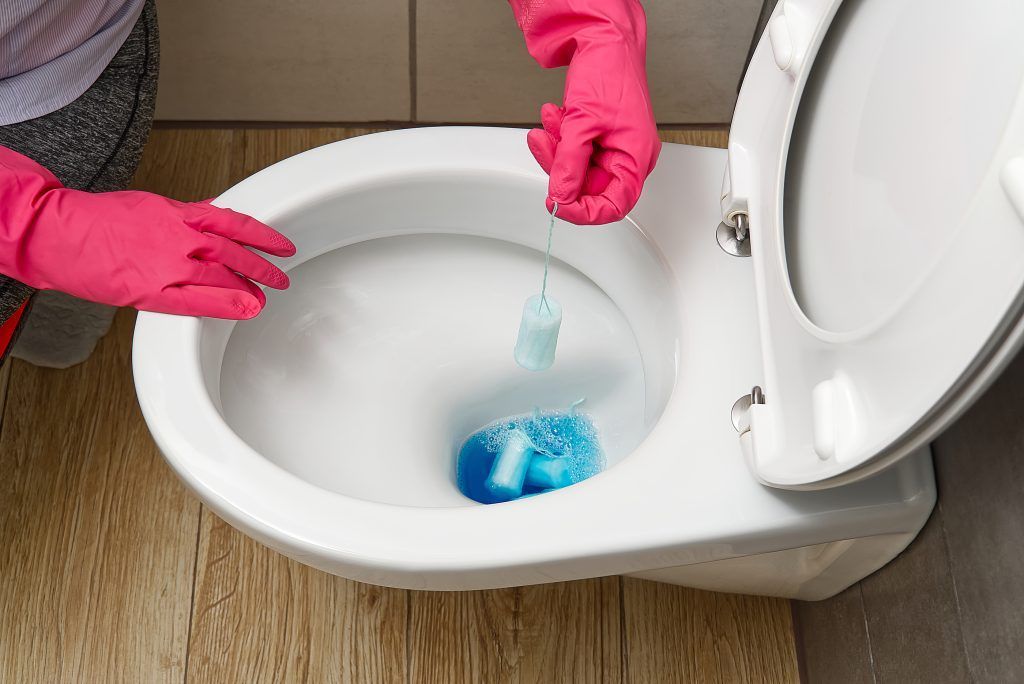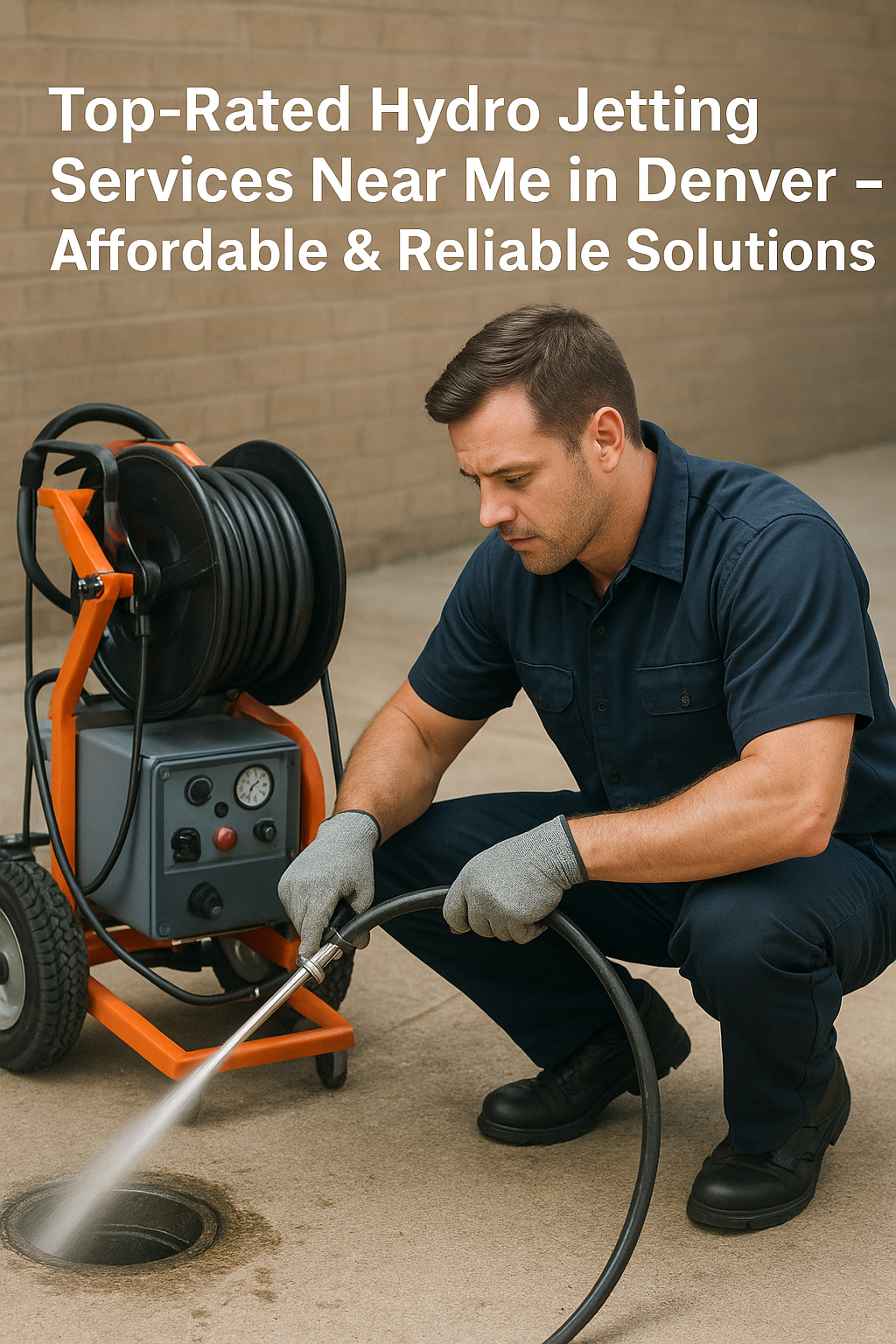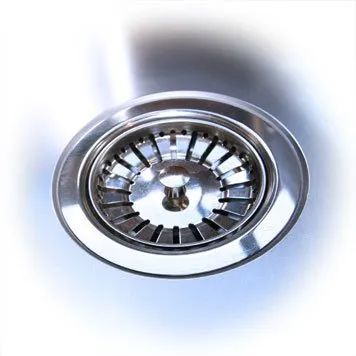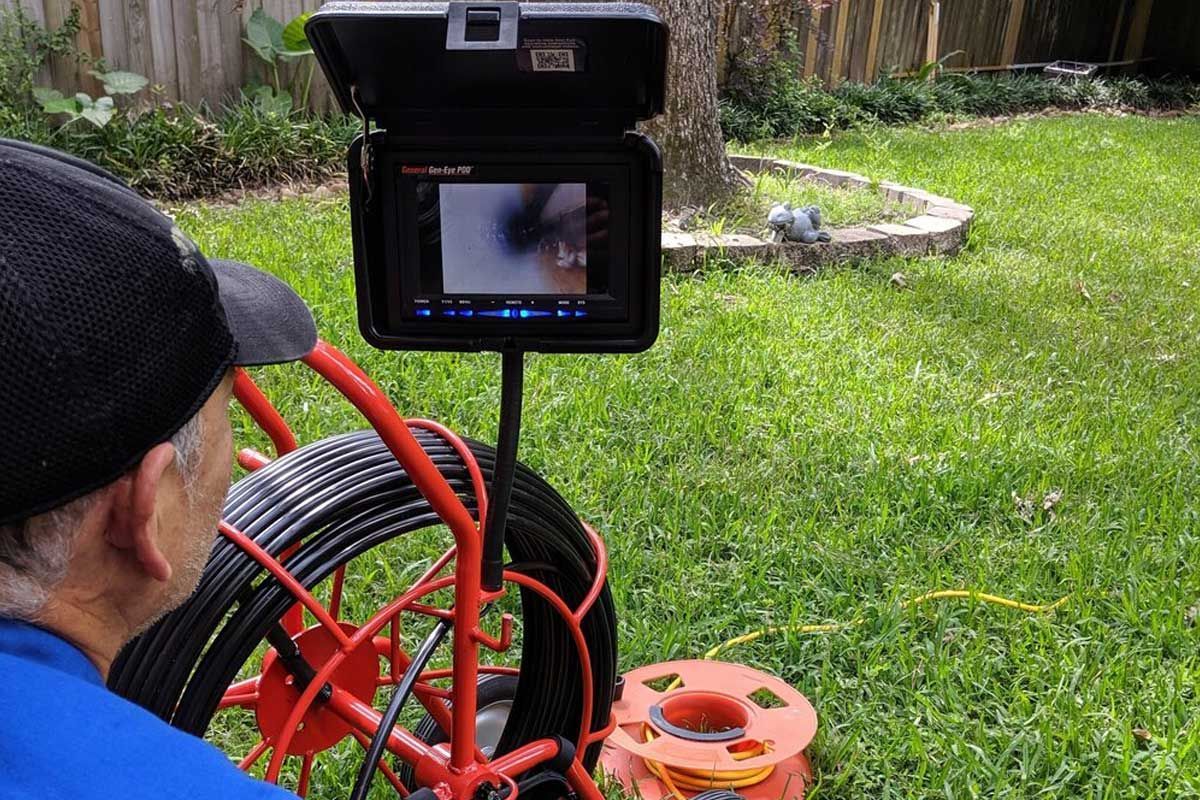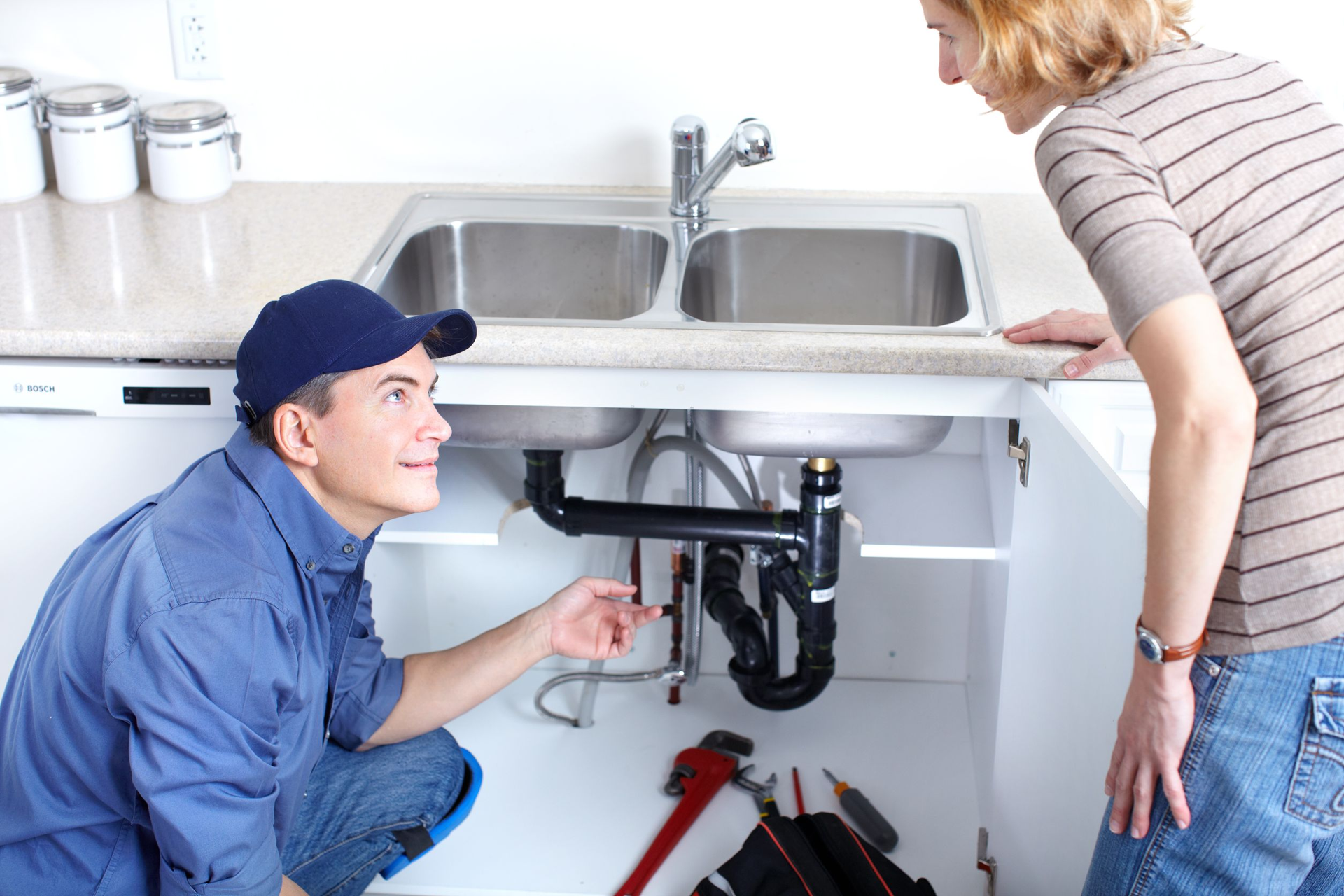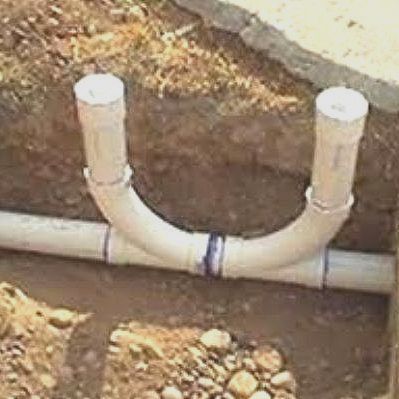What Is A Sewer Line Cleanout? (UPDATED)
A sewer line cleanout, or drain cleanout, is a crucial access point to the main sewer line inside or outside your home. Without it, accessing and clearing clogs or backups in your main sewer line would require extensive and costly excavation. The main sewer line runs under your home and connects to the city main sewer line.
The sewer cleanout gives plumbers, sewer professionals, or other sewer and drain technicians the ability to reach sewer line clogs and backups without digging up lines. While only plumbing professionals should use and access the cleanout, it’s a responsible step for Denver homeowners to know where theirs is in an emergency, ensuring they are prepared for any situation.
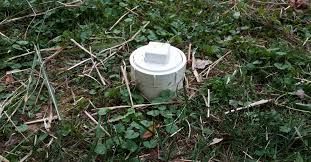
Sewer Line Cleanout Cost
Sewer line cleanout cost in Denver can vary widely, depending on the complexity of the job. Local plumbers will be able to advise you on the best course of action and necessary costs to properly clean out your sewer lines. Typical costs range from a few hundred dollars for simple jobs to several thousand for more complex projects involving utilizing professional equipment and technology.
Sewer line cleanouts in Denver are essential for maintaining a safe, efficient drainage system in any home. An experienced professional will ensure your sewer cleaning is done correctly with as little disruption as possible. Although upfront costs may seem significant, it's important to remember that investing in routine maintenance will save you time, money, and complications down the line.
How Can You Best Maintain Your Sewer Cleanout?
Proper sewer cleanout maintenance is essential to prevent messy plumbing emergencies and potential damage to your home. Here are some key strategies to ensure your sewer cleanout stays in top condition:
Manage Tree Roots, Soil and Foliage
Tree roots can infiltrate sewer lines through tiny cracks, leading to blockages and damage. To prevent this, regularly trim tree roots and manage overgrown foliage around your cleanout. Don't plant certain types of trees by sewer and water lines. This ensures easy access for sewer scope camera inspections and reduces the risk of roots obstructing your sewer line.
Keep the Cleanout Cap Sealed
Always keep your sewer cleanout capped and sealed. An unsecured cap can lead to hazardous waste leaking out and allow rainwater and debris to enter, causing backups. Only a professional should remove the cap for inspections or maintenance to ensure it’s properly resealed.
Prevent Clogs from Forming
Adopt good plumbing practices to avoid clogs. Use drain strainers to help with catching food scraps and hair, and only flush toilet paper and human waste. By preventing clogs, you'll reduce the strain on your sewer cleanout and ensure it functions effectively.
Schedule Sewer Line Camera Inspections & Cleanings
Hiring professional drain cleaning services regularly can help remove buildup and prevent major blockages. Affordable plumbers near you have the plumbing tools and sewer inspection cameras with cleaning expertise to thoroughly inspect, clean and repair your sewer lines, ensuring your plumbing system operates smoothly.
By following these important plumbers list sewer line maintenance steps, you can maintain your sewer cleanout and avoid potential plumbing disasters. Regular maintenance not only keeps your sewer system running efficiently but also extends its lifespan, saving you time and money in the long run.
How to Clear a Sewer Cleanout
Clearing a sewer cleanout involves several key steps to make sure your plumbing system functions smoothly. Here's a plumbers guide on how to do it.
Steps to Clear a Sewer Cleanout
- Gather the Necessary Tools:
- Heavy-duty gloves
- Sewer auger or drain snake
- Plumbing wrench
- Bucket
2. Locate the Cleanout: Identify where the cleanout fitting is located. Typically, it's found outside the house near the foundation or in the basement.
3. Prepare for the Task: Wear heavy-duty gloves to protect your hands. Place a bucket nearby to catch any overflow water when you open the cleanout.
4. Access the Cleanout: Use a plumbing wrench to remove the cap from the sewer cleanout fitting. Slowly loosen it to release built-up pressure.
5. Inspect and Clear the Blockage: When the cap is off, inspect the pipe's interior. Use a sewer auger or a drain snake to reach and break up the clog. Insert the tool slowly and crank it
to dislodge any obstructions.
6. Flush the System: After breaking up the clog, run water through the system to ensure the blockage has been cleared completely. You should use a garden hose to flush the sytem after
a sewer clog has been cleared.
To avoid recurring sewer clog issues, follow these plumbers preventive measures:
- Routine Inspections: Schedule periodic inspections of your sewer line.
- Proper Disposal: Avoid flushing non-degradable items and disposing of grease down the drain.
- Use Drain Strainers: Install drain strainers in sinks and showers to catch hair, food particles, and other debris.
Regular sewer & drain maintenance, inspection and proper care can save you from the cost and hassle of dealing with frequent sewer line clogs. If you encounter persistent issues, it may be best to consult a professional sewer line plumber to ensure your system is in top condition.
By following these sewer clearing steps and plumbers tips, you can effectively clear your sewer cleanout and maintain a trouble-free plumbing system.
How Often Should Your Sewer Line be Cleaned?
Regular routine sewer line scope camera inspection and cleaning with maintenance of your sewer line is crucial for preventing sewer line clogs that lead to severe sewer line blockages and costly sewer pipe repairs.
Generally, plumbing experts suggest scheduling a professional plumbing sewer line scope inspection and cleaning every 18 to 22 months. However, this recommendation really needs to be based on your Denver homes history of sewer line clogs and sewer blockages and other unique sewer circumstances.
Here are some factors that might influence your sewer line cleaning schedule:
- Household Size: Larger families generate more wastewater, potentially increasing the need for more frequent sewer line cleanings.
- Usage Patterns: If your household uses a lot of water or disposes of items that can clog drains (like grease or wipes), you may need more frequent upkeep.
- History of Sewer Line Issues: Homes that have experienced previous sewer line problems should consider more regular maintenance to avoid recurring issues.
Consult an Affordable Denver Professional Drain Brain LLC Plumber
While these Denver plumbers guidelines are helpful, consulting a professional Denver plumber near you that can provide a tailored sewer line scope camera inspection, cleaning and maintenance plan. Denver plumbers can assess your sewer line's condition with a sewer scope camera and recommend an optimal cleaning frequency, ensuring it remains clear and functions properly. Regular inspections and cleanings by experts like Drain Brain LLC or HomeServe can help catch potential problems before they become major issues.
How Can You Best Maintain Your Sewer Cleanout?
Proper sewer cleanout maintenance is essential to prevent messy plumbing emergencies and potential damage to your home. Here are some key strategies to ensure your sewer cleanout stays in top condition:
- Manage Tree Roots, Soil and Foliage
Tree roots can infiltrate sewer lines through tiny cracks, leading to blockages and damage. To prevent this, regularly trim tree roots and manage overgrown foliage around your cleanout. Don't plant certain types of trees by sewer and water lines. This ensures easy access for sewer scope camera inspections and reduces the risk of roots obstructing your sewer line.
2. Keep the Cleanout Cap Sealed
Always keep your sewer cleanout capped and sealed. An unsecured cap can lead to hazardous waste leaking out and allow rainwater and debris to enter, causing backups. Only a professional should remove the cap for inspections or maintenance to ensure it’s properly resealed.
3. Prevent Clogs from Forming
Adopt good plumbing practices to avoid clogs. Use drain strainers to help with catching food scraps and hair, and only flush toilet paper and human waste. By preventing clogs, you'll reduce the strain on your sewer cleanout and ensure it functions effectively.
4. Schedule Plumbing Inspections & Cleanings
Hiring professional drain cleaning services regularly can help remove buildup and prevent major blockages. Affordable plumbers near you have the plumbing tools and sewer inspection cameras with cleaning expertise to thoroughly inspect, clean and repair your sewer lines, ensuring your plumbing system operates smoothly.
By following these important plumbers list sewer line maintenance steps, you can maintain your sewer cleanout and avoid potential plumbing disasters. Regular maintenance not only keeps your sewer system running efficiently but also extends its lifespan, saving you time and money in the long run.
How to Prevent Sewer Line Clogs in Your Sewer Cleanout
Preventing sewer line clogs in your sewer cleanout starts with mindful habits and a few practical steps to ensure your plumbing system remains efficient. Here’s a Plumbers guide on how to avoid those troublesome sewer line blockages:
Implement Good Drain Practices
- Use Drain Strainers: Place strainers over your kitchen sink and shower and bathtubdrains to catch food scraps, hair, and other debris that can cause sewer drain blockages. Regularly clean the the drain strainers to keep them effective.
- Avoid Flushing Non-Flushables: Only flush human waste and toilet paper. Any Items like feminine hygiene products, wet wipes, and paper towels should be disposed of in the trash can.
Regular Sewer Pipe Camera Inspections
- Routine Sewer Inspections: Schedule regular sewer scope camera inspections of your sewer line plumbing system to catch potential small clog problems early. Affordable Denver Plumbers near you can identify and repair sewer line issues before they escalate.
- Periodic Cleaning: Use safe, enzyme-based drain cleaners to maintain and clear toilet, shower and sink drain pipes. Avoid harsh chemical drain cleaners which can damage your pipes over time.
Mindful Food Disposal Habits
- Proper Grease Disposal: Never pour grease or cooking oil down the drain. Instead, collect it in a container and dispose of it with your regular trash. Grease can solidify and cause significant clogs.
- Food Waste Management: Rather than rinsing all food scraps down the sink, compost appropriate waste and throw the rest in the garbage.
By integrating these new drain and sewer preventitive maintenance habits and best Denver plumbers tips into your daily routine, you can significantly reduce the risk of expensive clogs and blockages in your sewer line cleanout and keep your plumbing system running smoothly.
How they answer this question
Do All Homes Have a Sewer Line Cleanout?
Do all homes have a sewer line cleanout? The answer varies depending on the age and condition of your home, as well as its location. Generally speaking, if your home is in a Denver area served by municipal sewage systems – such as Denver, CO – then it likely has a cleanout installed.
This is especially true if the system was built after 1985, when the laws began to require the installation of sewer line cleanouts for newly constructed homes.
However, older homes or those located in rural areas without centralized sewage treatment may not have a cleanout installed. To be sure, you can check your plumbing diagrams or ask a local plumber for advice before attempting to perform any sewer-line maintenance or repair work.
What should you do if your homedoes not have a sewer line cleanout?
If you discover that your home is missing a sewer line cleanout—a situation more common in older homes, especially those with cast iron plumbing—don’t worry. While homes built with modern PVC piping almost always include cleanouts, some older properties may lack this important access point.
The good news is that a professional plumber can install a sewer line cleanout on your existing system. This upgrade is highly recommended, as it makes it much easier to perform routine maintenance, run plumbing snakes, or use a sewer camera to find and resolve blockages. Installing a cleanout not only streamlines future repairs but can also save you considerable time and money if sewer problems arise.
If you’re unsure whether your home has a cleanout, consult your plumbing diagrams or reach out to a local Denver plumber for an inspection and personalized advice.Call Drain Brain LLC at 720-322-4845
What should you do if your home does not have a sewer cleanout or has an insufficient number of cleanouts?
What If Your Home Doesn’t Have a Sewer Cleanout (or Doesn’t Have Enough)?
If you’ve checked your plumbing layout and discovered your home is missing a sewer cleanout, or you suspect there aren’t enough for proper maintenance, don’t panic—there are solutions.
First, know that older homes, especially those with cast iron piping, might not have cleanouts installed, while modern PVC systems almost always do. If you find yourself in an older Denver home without a cleanout, or you’d like additional access points for easier maintenance, a licensed plumber can assess your setup and add cleanouts as needed.
Why Cleanouts Matter
Cleanouts allow plumbers to quickly run drain snakes or camera inspection tools through your lines, making it easier (and less invasive) to deal with clogs and spot potential problems. Not having enough cleanouts may mean more complicated and costly repairs down the road.
What You Should Do
Consult a Professional: Reach out to a local, licensed plumber for an evaluation. They have the tools and know-how to determine the best locations for new cleanouts.
Upgrade If Needed: If your plumbing is mostly cast iron without cleanouts, now may be a good time to discuss upgrades to more accessible systems or adding cleanouts where it makes sense for future maintenance.
Stay Proactive: The convenience and cost savings of having proper cleanout access points make them a smart investment for any homeowner.
Adding or upgrading your cleanouts is a practical way to keep your sewer line accessible and your plumbing running smoothly for years to come.
What materials are typically used in homes without sewer cleanouts?
What Materials Are Common in Homes Without Sewer Cleanouts?
In homes where a sewer cleanout is missing, you'll often find that the plumbing system is constructed with older materials, such as cast iron pipes. Cast iron was a standard choice in residential plumbing for many years, especially in homes built before the widespread adoption of modern plumbing codes.
It’s quite rare to see homes built with more recent materials—like PVC (polyvinyl chloride) piping—that lack a dedicated sewer cleanout, since most state and municipal codes began mandating cleanout installations once PVC became the norm.
So, if your house doesn’t have a sewer line cleanout, there’s a strong chance it features cast iron piping, particularly if it was built several decades ago.
Homes outfitted with newer materials like PVC or ABS (acrylonitrile butadiene styrene) almost always include cleanouts as part of their original design, reflecting more current building standards.
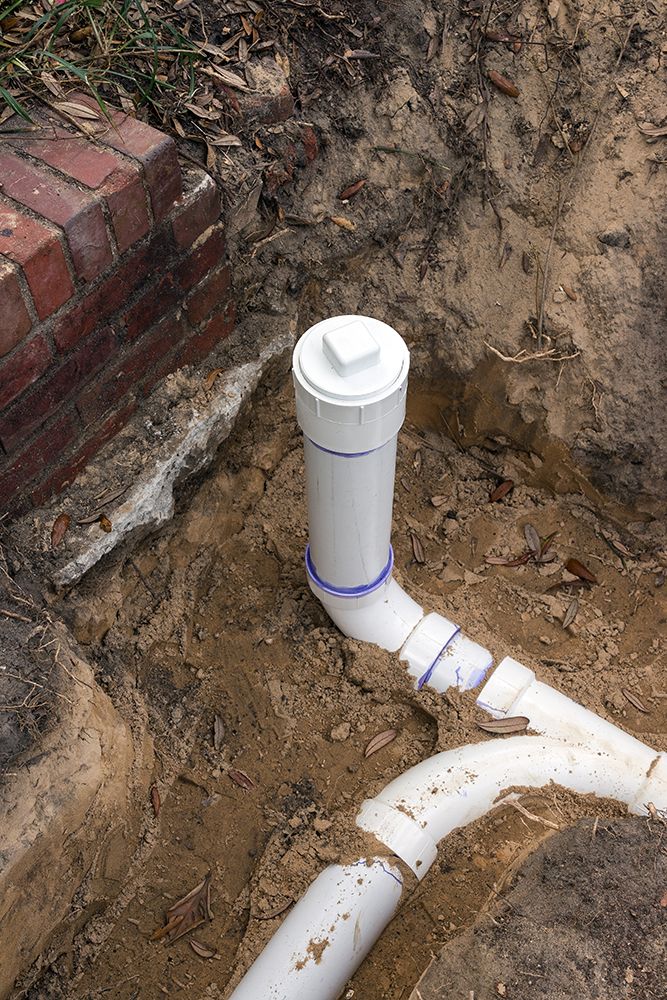
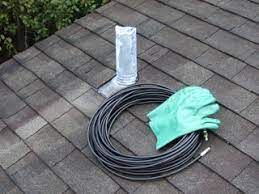
Roof Vent Sewer Cleanout
Many Denver homeowners wonder why roof vent sewer line cleanouts are so important. Without roof vent cleanouts, sewage can easily become backed up due to clogs or other blockages in the system. Not only can this be an unsightly mess, it can also lead to costly repairs by a plumber.
Fortunately, roof vent sewer line cleanouts prevent these problems by allowing air into the line and allowing any gases to escape safely out of your roof - this is especially important if you have a septic tank. Roof vent sewer line cleanouts are easily installed and require minimal maintenance. Spend a little time now and save yourself hassle later; invest in roof vents for your sewer line cleanout!
Toilet Sewer Cleanout
A toilet sewer cleanout is an important tool for maintenance and repair of plumbing systems. It provides access to the sewer system, allowing it to be cleared out, serviced, or replaced with ease. The toilet sewer cleanout simplifies challenging fixes and can be found in any household. Proper installation and occasional maintenance are key points to ensure it continues working as efficiently as possible. Contractors often use toilet sewer cleanouts as part of their repair process to save time and resources consumed during the job. This makes it an invaluable asset when there's a plumbing problem somewhere in the house!
How Many Cleanouts Does a House Typically Have?
Most homes are equipped with a primary sewer cleanout to facilitate easy access to the sewer line for maintenance and emergencies. It's common for larger residences to have a secondary cleanout as well. However, in rare instances, especially in older homes, you might find there is no cleanout at all.
Key Points to Consider:
Standard Practice: One primary cleanout is the norm in most homes.
Larger Homes: May feature an additional cleanout for better accessibility.
Older Homes: Occasionally might lack a cleanout entirely due to outdated plumbing regulations and standards.
By understanding these plumbing variations, homeowners in Denver can better prepare for any plumbing issues that arise.
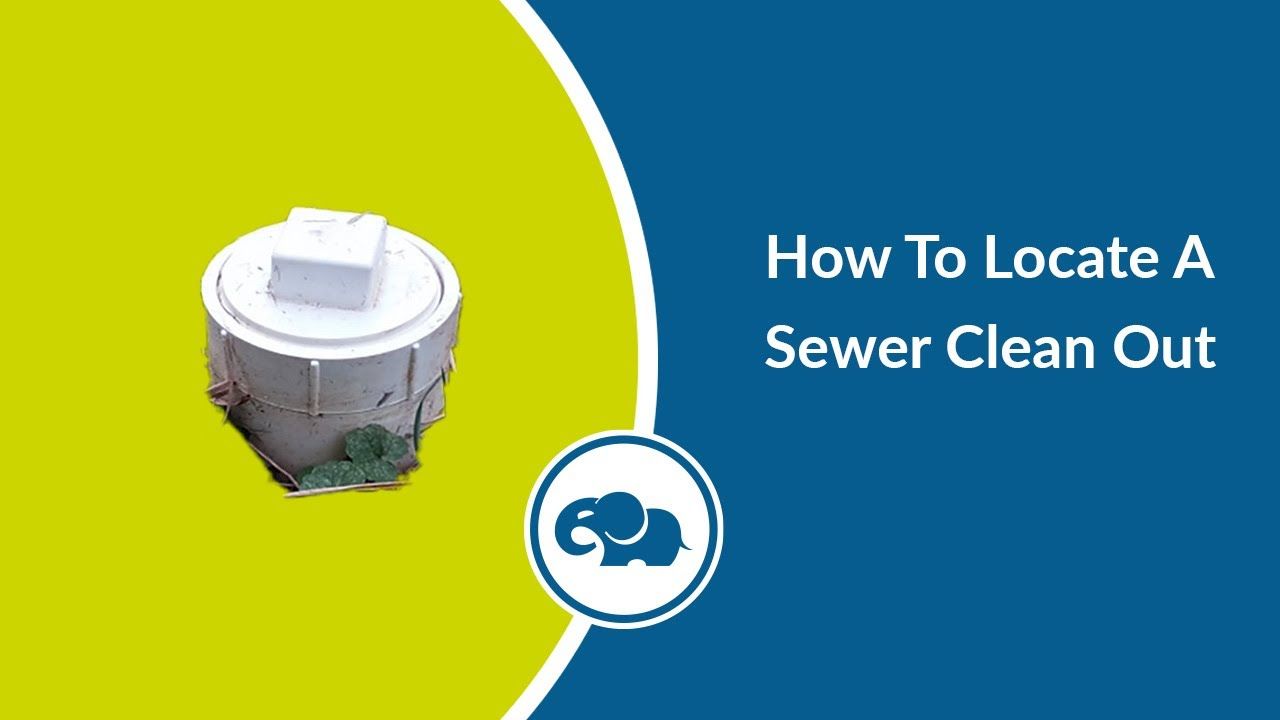
How To Find Main Sewer Line Cleanout?
Knowing how to locate the main sewer line cleanout of your home can help you avoid costly plumbing repairs. Fortunately, finding the main cleanout is quite straightforward; it's usually placed near the edge of your house and property. The cleanout usually looks like a white PVC pipe with a threaded lid that sticks out of the ground. Be sure to check both sides of your house since it may be on either side.
Make sure you don't mistake a yard drain or sump pump for the cleanout pipe; it should be marked clearly with "sewer" if it is in fact the main sewer line access point. It's also helpful to contact your local public works department if you're having difficulty finding the cleanout; they often keep records indicating where these pipes are located. Knowing how to find your home's main sewer line cleanout can save you time and money in case of a plumbing emergency!
Why Is It Important to Maintain Tree Roots and Foliage Around Your Sewer Cleanout?
Maintaining tree roots and surrounding foliage is crucial for the health and functionality of your sewer cleanout.
Prevent Blockages and Damage
Tree roots are notorious for infiltrating sewer lines through tiny cracks. Over time, these roots can cause significant blockages, leading to slow drains or even complete pipe bursts. Regularly trimming and monitoring tree growth can help avoid these costly and inconvenient issues.
Ensure Accessibility
Plant Foliage like grass, bushes and shrubs can grow over the sewer cleanout, making it difficult to find and inspect. This can be a serious problem during sewer clogs or blockages that are backing up and become expensive emergencies when quick access is needed. Keeping the sewer cleanout area clear ensures that any necessary maintenance or unexpected repairs can be handled swiftly.
Promote Sewer System Health
Consistent upkeep of soil, tree roots and foliage not only protects your sewer line but also promotes the overall health of your sewer system. When tree roots are kept in check, there’s less risk of cracks and other structural sewer line damage, ensuring a longer lifespan for your sewer pipes.
Always prioritizing the maintenance of tree roots and foliage around your sewer cleanout, you can prevent blockages, ensure easy access, and promote the longevity of your sewer system.
How they answer this question
What Does a Buried Sewer Cleanout Look Like?
A buried sewer cleanout is typically found just outside the perimeter of a bathroom or along the house's exterior. It usually features a capped round pipe that is usually white sticking a few inches above the ground and 3 to 4 inches in diameter. You'll identify it by its distinct cleanout cap, which can have either a square or round shape. Most of the time the sewer cleanout cap is made of PVC or metal, providing a durable seal. This crucial access point allows for easy sewer scope camera inspection, maintenance, and cleaning of your sewer line.
Key Sewer Cleanout Features:
- Location: Usually near a bathroom, outside the house.
- Diameter: Approximately 3 to 4 inches.
- Cap Shape: Square or round.
- Materials: PVC or metal construction for durability.
By recognizing these sewer cleanout and cap features, you can easily locate your homes sewer cleanout and ensure that any inspection, cleaning, & maintenance tasks are performed efficiently.
How to Locate a Buried Sewer Cleanout
Finding a buried sewer cleanout can initially seem challenging, using these simple steps, you can spot it without too much hassle. Here is a plumbers guide to help you locate it:
Steps to Find Your Sewer Cleanout
1.Check Around Your Home's Perimeter
Start by walking around the outside of your house, staying close to the foundation. Sewer cleanouts are typically situated just outside a bathroom.
2.Identify the Cleanout
Look for a capped pipe about 3 to 4 inches in diameter. This pipe will either have a square or round head.
3.Clear Any Bushes or Obstructions
Cleanouts are often hidden by landscaping elements. Search under bushes, underbrush, or tall grass. Additionally, it might be housed in a ground-level box covered by a metal lid, so be vigilant for any such markers.
4.Trace the Sewer Line
Knowing the Sewer Cleanout location of your sewer line can be a valuable clue. Since the sewer cleanout aligns with the sewer line, you can trace from your main sewer line or septic tank toward your house. Continue along this path until you locate the capped pipe or ground box.
Tips for Easier Sewer Cleanout Identification
- Use a Sewer Line Map: If you have access to your home’s sewer diagram, this can provide exact locations of cleanouts.
- Consult Utility Records: Your local utility company may have records that include the location of your sewer cleanout.
- Professional Locating Assistance: If you’re still having trouble, consider hiring a plumbing professional who can use specialized sewer pipe locating equipment to locate buried pipes.
Following these steps will guide you effectively in uncovering a buried sewer cleanout, ensuring you can address any plumbing concerns with confidence.
How to Tell If Your Sewer Cleanout is Clogged?
Identifying a clogged sewer cleanout involves several key signs and symptoms:
- Multiple Drain Issues: If you're noticing that several drains in your home are clogged at the same time, it's a strong indicator of a blockage in the main sewer line.
2. Foul Odors: A distinct and unpleasant sewage smell coming from your drains or yard often points to a backed-up sewer line.
3. Unusual Sounds: Hearing gurgling or bubbling noises from your pipes can signal trapped air, which is common in a clogged sewer line.
4. Slow Draining: Water taking longer to drain from sinks, showers, or bathtubs is another red flag.
5. Sewage Backups: In severe sewer line clogs and blockage cases, you may see sewage waste coming up through the cleanout or floor drains. This situation is not only unsanitary but also dangerous.
What to Do If Your Sewer Cleanout is Clogged
Given the health hazards involved with sewage, it's crucial to act promptly. Here are the steps you should follow:
- Do Not Use Harsh Chemicals: Chemical drain cleaners can corrode pipes and might not solve the problem.
- Contact a Professional Plumber: Reach out to a qualified plumber or a reputable service provider like Drain Brain LLC or Homeserve. They’ll have the tools and expertise to inspect and clear the blockage safely.
- Regular Maintenance: Consider periodic professional inspections to prevent future clogs.
For your safety and peace of mind, never ignore the signs of a clogged sewer cleanout. Taking quick and swift action can save you from costly repairs and health hazards.
How they answer this question
Why Should the Sewer Cleanout Cap Remain Sealed?
Keep the sewer cleanout cap tightly sealed is crucial for several reasons:
- Prevent Leakage of Hazardous Waste: An unsecured or loose cleanout cap canand will lead to the escape of harmful waste materials. Leakage of hazardous waste not only poses serious health risks but can also lead to environmental contamination.
- Avoid Rainwater Infiltration: An open or poorly sealed cleanout cap can easily allow rainwater to penetrate the sewer system. This excess water can overwhelm the sewer system, causing backups and potential overflows.
- Block Debris Entry: When the cap is not properly secured, debris such as leaves, dirt, and trash can find their way into the sewer line. This will evenually lead to sewer clogs and other operational issues.
- Professional Sewer Inspections: The cleanout cap should only be removed by a qualified plumber during routine inspections. This ensures that the system remains functional and any potential issues are promptly addressed.
By keeping and maintaining a secure seal on your sewer cleanout cap, you preserve the efficiency & health of your homes sewer system and reduce the risk of costly repairs and health hazards.
Denver Sewer Cleanouts
Due to the Denver climate, the cleanout can be located in different areas.
Single Family homes in colder climates will typically have sewer & drain cleanouts located inside the house or building.
Homes on slab foundations in colder climates may require some extra detective work when needing to locate an outdoor drain cleanout. The location of the cleanout is often found inside, such as a bathroom, garage or utility room but could also be situated outdoors—so both areas should be explored.
In warmer regions, homeowners often benefit from a yard-installed outdoor drain cleanout that helps ensure smooth drainage and proper water flow. In many newer homes, especially those built in areas like Denver or across the DFW metroplex, the sewer cleanout is usually positioned in the lawn near the house.
Because of this, the cleanout may sometimes be covered by landscaping, mulch, or hidden within planting beds close to the foundation. If you don’t spot the cleanout right away, be sure to move aside mulch or check around bushes and flower beds—it’s not uncommon for it to be concealed by well-intentioned gardening.
Check your bathrooms, utility rooms, and garage area. The sewer cleanout will be close to a cluster of drainage pipes like a full bathroom. Check each bathroom and look for a capped black or white PVC drain line. If you can’t locate it there, check your utility room or garage.
If all else fails, remember to give your exterior a thorough inspection, especially along the foundation and in landscaped areas, as the cleanout could be just out of sight beneath a layer of mulch or decorative ground cover.
How to Unclog a Main Sewer Line Without a Clean out?
Unclogging a main sewer line without a cleanout can be tricky and potentially hazardous, so it is important to handle the job with caution. First, you should find where the main sewer line runs from your home; this will help you determine where to start looking for a cleanout point. The cleanout point is typically near the foundation of the house, either under or beside it.
If you cannot locate a cleanout point in these areas, consult a local plumbing service provider Drain Brain LLC as they should have experience with finding them. Once you have identified your main sewer line’s cleanout point, the task of unclogging the line can begin.
Drain Brain LLC specializes in cleaning & repairing sewer cleanouts for drains & main sewer line pipes our drain experts and have the skills and equipment to perform residential and commercial sewer video camera inspection so that problems are detected fast.
This will help solve issues like clogged drains, leaking pipes, broken pipes, and other sewer dilemmas. Locating the exact causes of problems early saves clients numerous headaches. Can’t find your cleanout give us a call.
For superior cleanout service, home and business owners can schedule an appointment by calling Drain Brain LLC today at 720-322-4845.
